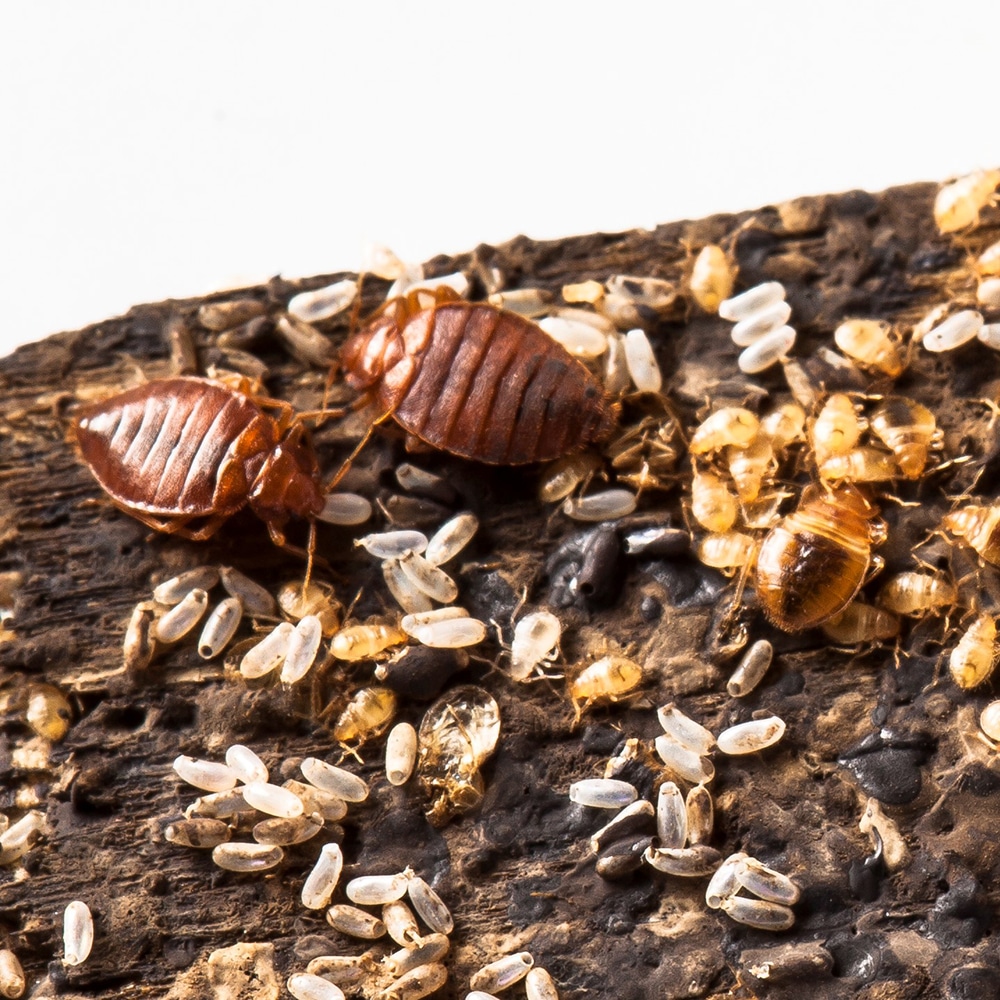
In the article
Last Updated on 16/02/2025 by Tony Abrahams
Seeing bite marks, blood stains, faecal spots, shed skins, or live bugs can indicate a bed bug infestation, but a nest—characterised by the presence of eggs, nymphs at various stages (instars), and adults (5-7mm)—is confirmed when all these signs are found together.
6 Signs of a Bed Bug Infestation
1. Bites:
Bed bug bites are often found in straight lines, clusters, or zig-zag patterns. They appear as red, itchy spots that can occur anywhere on your body but are usually found on arms, legs, and shoulders. The severity of the bites range from a mild irritation to triggering allergic reactions; scratching these bites can lead to infection.
2. Live or Dead Bugs:
You might notice live or dead bed bugs on your sheets on your sheets, mattress, in cracks or crevices on the bed frame, or other areas around your bed such as curtains and side tables.
3. Blood Spots:
Blood spots on your sheets can occur when you unknowingly roll over and squash a fed bed bug in your sleep.
4. Faecal Stains:
Small black ink spots on your skin or bed sheets are bed bug faecal matter, excreted shortly after feeding.
5. Castings (Shells) and Eggs:
Bed bugs shed their exoskeletons five times before reaching adulthood. You might find these shed skins and eggs in areas where they nest.
6. Smell:
A large infestation can produce a musty, sweet odour.
Images of Bed Bug Infestations
8 Photos Of Bed Bug Infestations.
Our picture gallery has 8 images of bed bugs and their signs and symptoms. The images include adults, nymphs, eggs, exoskeletons (skins), bites, blood, and faecal stains, and the life cycle. Find out where they live and what to look out for.
Click on the image to enlarge.
How to Get Rid of a Bed Bug Infestation Fast
If you think you have bed bugs, don’t panic. Just follow these easy three steps to get rid of bed bugs fast and forever.
Step 1: Secure the Mattress
- Start by covering your sleeping mattress with a bed bug mattress cover, ensuring it’s zipped up and the tab is closed. This traps bed bugs inside, eventually killing them through starvation. It also helps spot bed bugs because the covers remove hiding spots on the mattress.
Step 2: Treat the Bed Frame or Ensemble Base
Ensemble Beds:
- Stand the base on its end, remove all the wheels and cover it with a bed bug mattress cover, and zip it up completely. Screw the wheels back into the base, piercing the cover with the bed leg screws.
Bed Frames with Slats:
- Use a Bed Bug Steamer to steam the entire bed frame, paying special attention to cracks and crevices. Remove the slats and steam on both the top and bottom surfaces of the slats.
- Before replacing bed slats, apply Bed Bug Killer powder to the bed frame and slats using a Bed Bug Killer Duster. Ensure the powder covers every inch, including the undersides.
Step 3: Set Up Barriers or Tape
To protect yourself from bed bugs in the room, use Bed Bug Barriers:
- Screw-in Barriers: Attach these to the legs of the ensemble beds. Apply powder inside and outside the barriers and on the wheels.
- Floor Barriers: Place bed legs in the Floor Barrier, dusting powder inside the tray and barrier.
- Bed Bug Barrier Tape: For square bed legs or those larger than 65mm, use the tape at the bottom of the legs, dusting powder around the leg and floor.
Final Tips:
- Keep your bed at least 30cm away from walls, bedside tables, and other furniture to prevent bed bugs from climbing on your bed.
- Isolate the bed so the only access points are the bed legs. This setup will kill bed bugs in the room within a few weeks to a month, regardless of their hiding places.
- Following these steps will ensure bed bugs are effectively eliminated from your bed and room, allowing you to sleep peacefully, knowing you’re protected.
How To Treat A Bed Bug Infestation On A Bed Frame DIY
How To Treat A Bed Bug Infestation On An Ensemble Bed DIY
How To Stop Bed Bug Infestations From Returning
Check Hotel Mattresses:
- When staying in a hotel look for small blood spots, dark stains, and live bugs on the mattress.
After Returning From Travelling:
- Wash all your clothes in hot water.
- Disinfect your luggage.
- For items that can’t be washed, seal them in a plastic bag and freeze for four days.
Avoid Second-Hand Furniture:
- Don’t buy second-hand furniture or mattresses, as they might be infested.
Use Diatomaceous Earth (DE):
- Sprinkle DE powder around power points and electrical outlets to keep bedbugs from entering your home.
- If using a pest control service, ask them to use DE.
- Apply DE to your bed frame; it keeps killing bed bugs as long as it’s not removed.
Travelling Guests:
- Wash their clothes in hot, soapy water.
- Disinfect their luggage.
New Housemates:
- Wash their clothes in hot water.
- Vacuum their luggage to ensure no bedbugs enter your home.
Final Thoughts
Bed bug infestations are about the last thing you want to deal with, so be vigilant. Avoid places and furniture you think could be infected, and look for the signs early on.
If you see some of those signs, get started sorting things out as soon as possible, as before you know it, the problem could have spread like wildfire.
It’s hard to sleep tight when the bed bugs bite, so for more information on the world’s worst houseguests, visit our blog today.
Frequently Asked Questions:
- Where Do Bed Bugs Come From?
Bed bugs are transferred from infested items like old furniture, dirty clothes, or visits to infested areas such as hotel rooms. Discarded furniture and items from tainted areas are common sources. - Can They Take Over the Whole House?
Yes, bed bugs can spread quickly throughout the house. They hide in mattresses, bed frames, sofas, chairs, upholstery, wooden furniture, curtains, and cushions—anywhere they can find shelter and be close to their food source (you). - How Many Make an Infestation?
An infestation can start with just one pregnant female, capable of laying up to 500 eggs in her lifetime. Quick control is crucial to prevent spreading. - How Long Does an Infestation Take to Manifest?
It takes up to seven weeks for bed bug eggs to hatch and develop into adults. Discovering a fully-grown bed bug suggests that adults and eggs have been present for at least seven weeks. Effective treatment must eliminate all eggs to prevent ongoing hatching.
Are you looking for an organic do it yourself bed bug treatment?
Sources
Department of Health WA (Bedbugs), Oxford Academic (Perspectives on Biology and Management of Bedbugs), National Library of Medicine (Bedbugs: Clinical Relevance and Control Options)

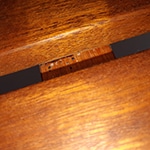

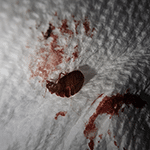

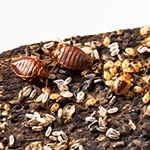
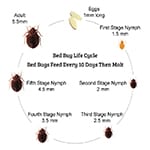
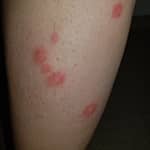
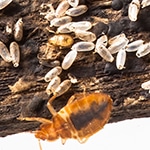


Leave a Reply